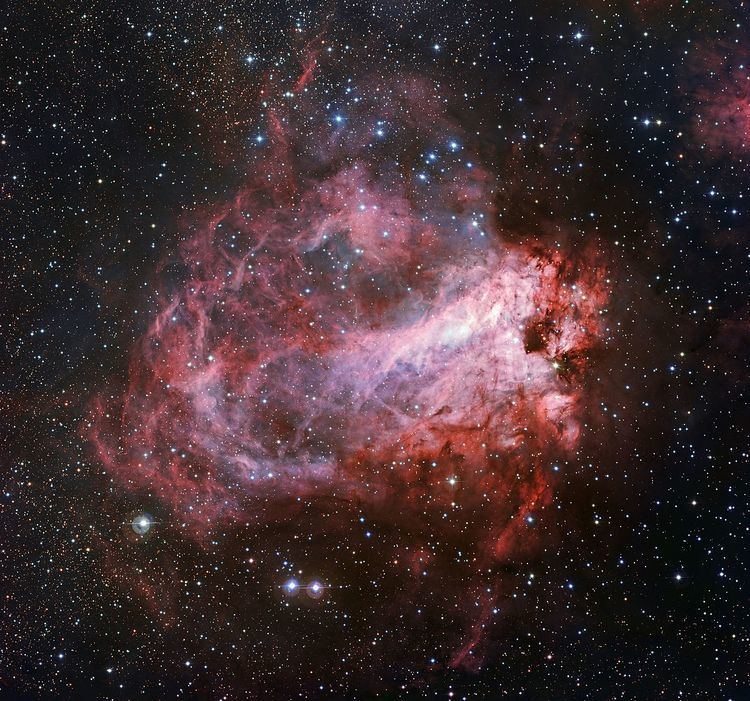 | ||
HD 168625 (V4030 Sgr) is a blue hypergiant and candidate luminous blue variable located in the constellation of Sagittarius easy to see with amateur telescopes. It forms a visual pair with the also blue hypergiant (and luminous blue variable) HD 168607 and is located to the south-east of M17, the Omega Nebula.
Its distance and association with that nebula and the mentioned star is dubious; while some authors think both stars are physically associated and belong to the stellar association Serpens OB1, at a distance to the Sun of 2.2 kiloparsecs (7.200 light years), others think HD 168625 is farther, at a distance estimated to be 2.8 kiloparsecs (9,100 light years) and unrelated to the former objects.
Physical characteristics
Assuming a distance of 2.2 kiloparsecs, HD 168625 is 220,000 times brighter than the Sun, having a surface temperature of 12,000 K. It is losing mass through a very strong stellar wind at a rate of roughly 1.46×10−6 solar masses per year and observations realized in 2012 with the help of the VLT show it's actually a binary star, with the companion being around 4.5 magnitudes fainter than the primary.
However, its most notable characteristic is the presence of a nebula surrounding it that was discovered in 1994 and that has been studied with the help of several instruments and observatories and telescopes that include among others the Hubble Space Telescope and the VLT.
Said studies show that HD 168625 is actually surrounded by two nebulae: an inner one that has an elliptical shape and a very complex structure that includes arcs and filaments, and a much larger outer one discovered with the help of the Spitzer Space Telescope that has a bipolar shape and that looks like a clone of the one surrounding Sanduleak -69° 202, the progenitor of the supernova 1987A in the Large Magellanic Cloud. This suggests Sanduleak -69° 202 was also a luminous blue variable as well as the possibility of HD 168625 exploding as a Type II supernova in the near future.
